Agriculture
The word horticulture is the English adjustment of Latin agricultura, from ager, "a field" and cultura, "development" in the strict feeling of "culturing of the dirt". Accordingly, an exacting perusing of the word yields "culturing of a field/of fields". Financial experts measure the aggregate factor profitability of horticulture and by this measure farming in the United States is around 2.6 times more beneficial than it was in 1948. Agribusiness alludes to the generation of nourishment and fiber and different merchandise through cultivating and ranger service. Horticulture was a key advancement that prompted the ascent in human progress raising of tamed creatures. The investigation of agribusiness is known as rural science. The related routine with regards to cultivating is contemplated in agriculture. Horticulture includes a wide assortment of claims to fame. Development of products on arable land and the peaceful grouping of animals on rangeland stay at the establishment of horticulture. In the previous century a refinement has been made between supportable horticulture and escalated cultivating. Present day agronomy, plant reproducing, pesticides and manures, and innovative changes have forcefully expanded yields from development. Particular reproducing and present day hones in creature cultivation, for example, serious pig cultivating (and comparative practices connected to the chicken) have comparably expanded the yield of meat. The more fascinating assortments of agribusiness incorporate aquaculture and tree cultivating. The major agrarian items can be comprehensively gathered into nourishments, strands, powers, crude materials, pharmaceuticals and unlawful medications, and a grouping of fancy or outlandish items. In the 2000s, plants have been utilized to develop biofuels, biopharmaceuticals, bioplastics, and pharmaceuticals.
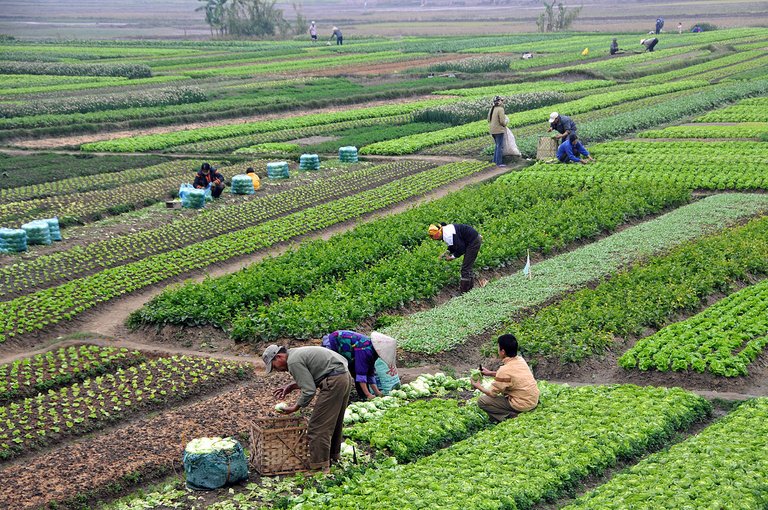
Particular sustenances incorporate grains, vegetables, organic products, and meat. Filaments incorporate cotton, fleece, hemp, silk and flax. Crude materials incorporate wood and bamboo. Medications incorporate tobacco, liquor, opium, cocaine,and digitalis. Other valuable materials are delivered by plants, for example, tars. Biofuels incorporate methane from biomass, ethanol, and biodiesel. Cut blossoms, nursery plants, tropical fish and fowls for the pet exchange are a portion of the fancy items. In 2007, around 33% of the world's specialists were utilized in agribusiness. In any case, the relative noteworthiness of cultivating has dropped relentlessly since the start of industrialization, and in 2003 - without precedent for history - the administrations division overwhelmed agribusiness as the monetary area utilizing the vast majority around the world. Notwithstanding the way that horticulture utilizes more than 33% of the total populace, farming generation represents under five percent of the gross world item (a total of all gross residential items).
Overview
Horticulture has assumed a key part in the improvement of human development. Until the Industrial Revolution, by far most of the human populace toiled in agribusiness. Advancement of farming systems has relentlessly expanded horticultural profitability, and the far reaching dispersion of these methods amid a day and age is regularly called a rural insurgency. A striking movement in farming practices has happened over the previous century because of new advances. Specifically, the Haber-Bosch strategy for blending ammonium nitrate made the conventional routine with regards to reusing supplements with edit pivot and creature compost less essential. Manufactured nitrogen, alongside mined shake phosphate, pesticides and motorization, have significantly expanded harvest yields in the mid twentieth century. Expanded supply of grains has prompted less expensive domesticated animals also. Further, worldwide yield increments were experienced later in the twentieth century when high return assortments of regular staple grains, for example, rice, wheat, and corn (maize) were presented as a piece of the Green Revolution. The Green Revolution sent out the advancements (counting pesticides and manufactured nitrogen) of the created world out to the creating scene. Thomas Malthus broadly anticipated that the Earth would not have the capacity to help its developing populace, but rather advances, for example, the Green Revolution have enabled the world to deliver an excess of sustenance.
Numerous administrations have sponsored agribusiness to guarantee a satisfactory nourishment supply. These rural endowments are regularly connected to the creation of specific products, for example, wheat, corn (maize), rice, soybeans, and drain. These sponsorships, particularly when done by created nations have been noted as protectionist, wasteful, and earth damaging.[8] In the previous century agribusiness has been described by improved profitability, the utilization of engineered manures and pesticides, specific rearing, automation, water tainting, and cultivate endowments. Advocates of natural cultivating, for example, Sir Albert Howard contended in the mid 1900s that the abuse of pesticides and manufactured manures harms the long haul richness of the dirt. While this inclination lay torpid for a considerable length of time, as ecological mindfulness has expanded in the 2000s there has been a development towards supportable horticulture by a few agriculturists, purchasers, and policymakers. As of late there has been a reaction against saw outside ecological impacts of standard farming, especially with respect to water contamination, bringing about the natural development. One of the real powers behind this development has been the European Union, which initially guaranteed natural nourishment in 1991 and started change of its Common Agricultural Policy (CAP) in 2005 to eliminate item connected homestead appropriations, otherwise called decoupling. The development of natural cultivating has recharged look into in elective advances, for example, coordinated nuisance administration and particular rearing. Ongoing standard innovative advancements incorporate hereditarily changed sustenance.
Starting late 2007, a few components have pushed up the cost of grain used to nourish poultry and dairy bovines and other steers, causing higher costs of wheat (up 58%), soybean (up 32%), and maize (up 11%) throughout the year. Sustenance riots have as of late occurred in numerous nations over the world. A pestilence of stem rust on wheat caused by race Ug99 is presently spreading crosswise over Africa and into Asia and is causing significant concern. Roughly 40% of the world's rural land is truly corrupted. In Africa, if current patterns of soil corruption proceed with, the mainland may have the capacity to sustain only 25% of its populace by 2025, as per UNU's Ghana-based Institute for Natural Resources in Africa.
History of Agriculture
Horticulture was produced no less than 10,000 years back, and it has experienced critical improvements since the season of the most punctual development. Confirmation focuses to the Fertile Crescent of the Middle East as the site of the soonest arranged sowing and reaping of plants that had already been assembled in nature. Autonomous improvement of horticulture is additionally accepted to have happened in northern and southern China, Africa's Sahel, New Guinea and a few districts of the Americas. Farming practices, for example, water system, edit turn, composts, and pesticides were created long prior however have made incredible walks in the previous century.
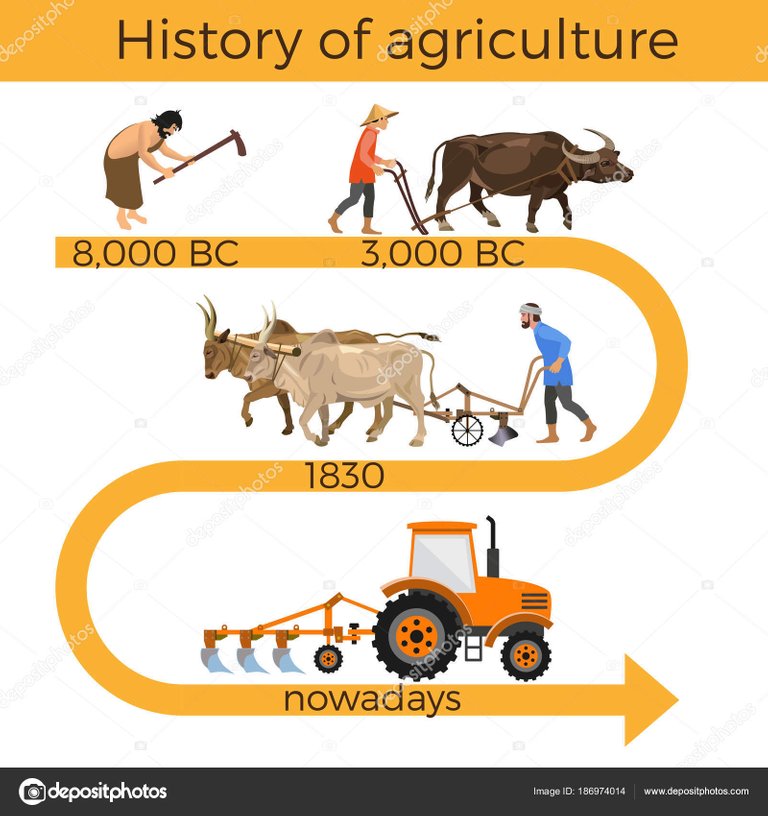
The Haber-Bosch technique for integrating ammonium nitrate spoke to a noteworthy leap forward and permitted trim respects defeat past requirements. In the previous century, farming has been described by improved profitability, the substitution of human work for manufactured manures and pesticides, particular rearing, and motorization. The ongoing history of agribusiness has been firmly tied with a scope of political issues including water contamination, biofuels, Genetically adjusted creatures, levies, and ranch sponsorships. As of late, there has been a reaction against the outer natural impacts of automated agribusiness, and expanding support for the natural development and Sustainable horticulture.
Ancient Origins
The Fertile Crescent of the Middle East was the site of the soonest arranged sowing and reaping of plants that had beforehand been assembled in nature. Free advancement of farming happened in northern and southern China, Africa's Sahel, New Guinea and a few districts of the Americas. Grain has been found in archeological destinations in Levant, and East of the Zagros mountains in Iran. The eight supposed Neolithic organizer yields of agribusiness show up: first emmer wheat and einkorn wheat, at that point hulled grain, peas, lentils, severe vetch, chick peas and flax. Unpleasant vetch and lentils alongside almonds and pistachios show up in Franchthi Cave Greece all the while, around 9,000 BC. Nor are local to Greece, and they seem 2,000 years before tamed wheat in a similar area. This recommends the development of vegetables and nuts went before that of grain in some Neolithic societies. By 7000 BC, little scale horticulture achieved Egypt. From no less than 7000 BC the Indian subcontinent saw cultivating of wheat and grain, as bore witness to by archeological unearthing at Mehrgarh in Balochistan.
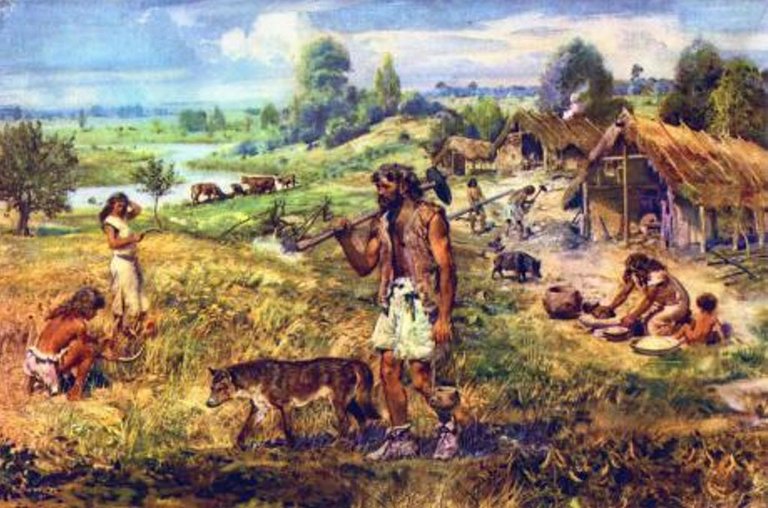
By 6000 BC, mid-scale cultivating was settled in on the banks of the Nile. About this time, farming was created autonomously in the Far East, with rice, as opposed to wheat, as the essential harvest. Chinese and Indonesian ranchers went ahead to train taro and beans including mung, soy and azuki. To supplement these new wellsprings of sugars, exceptionally composed net angling of streams, lakes and sea shores in these territories acquired incredible volumes of fundamental protein. Aggregately, these new strategies for cultivating and angling introduced a human populace blast predominating every single past extension, and is one that proceeds with today.
By 5000 BC, the Sumerians had created center agrarian methods including extensive scale escalated development of land, mono-trimming, sorted out water system, and utilization of a specific work compel, especially along the conduit presently known as the Shatt al-Arab, from its Persian Gulf delta to the conversion of the Tigris and Euphrates. Training of wild aurochs and mouflon into steers and sheep, individually, introduced the expansive scale utilization of creatures for sustenance/fiber and as helper animals trouble. The shepherd joined the rancher as a fundamental supplier for inactive and semi-roaming social orders. Maize, manioc, and arrowroot were first trained in the Americas as far back as 5200 BC. The potato, tomato, pepper, squash, a few assortments of bean, tobacco, and a few different plants were additionally created in the New World, as was broad terracing of soak slopes in a lot of Andean South America. The Greeks and Romans based on strategies spearheaded by the Sumerians however made few in a general sense new advances. Southern Greeks battled with extremely poor soils, yet figured out how to wind up a prevailing society for a considerable length of time. The Romans were noted for an accentuation on the development of harvests for exchange.
Middle Ages
Amid the Middle Ages, Muslim ranchers in North Africa and the Near East created and scattered horticultural advancements including water system frameworks in view of pressure driven and hydrostatic standards, the utilization of machines, for example, norias, and the utilization of water raising machines, dams, and stores. They additionally composed area particular cultivating manuals, and were instrumental in the more extensive selection of harvests including sugar stick, rice, citrus organic product, apricots, cotton, artichokes, aubergines, and saffron. Muslims additionally brought lemons, oranges, cotton, almonds, figs and sub-tropical yields, for example, bananas to Spain. The innovation of a three field arrangement of harvest turn amid the Middle Ages, and the importation of the Chinese-designed moldboard furrow, incomprehensibly enhanced agrarian productivity. Another imperative advancement towards the finish of this period was the revelation and resulting development of grub crops which permitted over-wintering of domesticated animals.
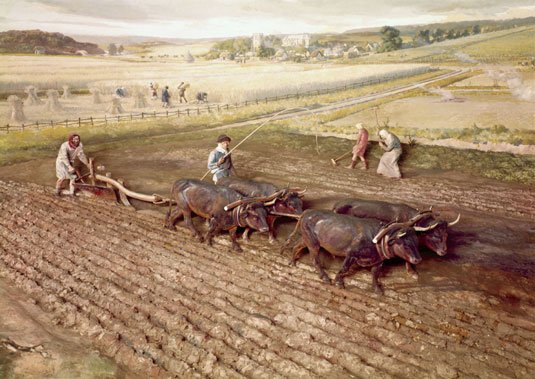
Modern Era
After 1492, a worldwide trade of already nearby harvests and animals breeds happened. Enter crops engaged with this trade incorporated the tomato, maize, potato, cocoa and tobacco going from the New World to the Old, and a few assortments of wheat, flavors, espresso, and sugar stick going from the Old World to the New. The most essential creature exportations from the Old World to the New were those of the steed and puppy (mutts were at that point show in the pre-Columbian Americas however not in the numbers and breeds suited to cultivate work). Despite the fact that not as a rule sustenance creatures, the steed (counting jackasses and horses) and canine immediately filled fundamental generation parts on western half of the globe ranches. By the mid 1800s, horticultural strategies, executes, seed stocks and developed plants chose and given an interesting name on account of its embellishing or valuable attributes had so enhanced that yield per arrive unit was ordinarily that found in the Middle Ages. With the quick ascent of automation in the late nineteenth and twentieth hundreds of years, especially as the tractor, cultivating assignments should be possible with a speed and on a scale already inconceivable. These advances have prompted efficiencies empowering certain cutting edge cultivates in the United States, Argentina, Israel, Germany, and a couple of different countries to yield volumes of fantastic deliver per arrive unit at what might be as far as possible.
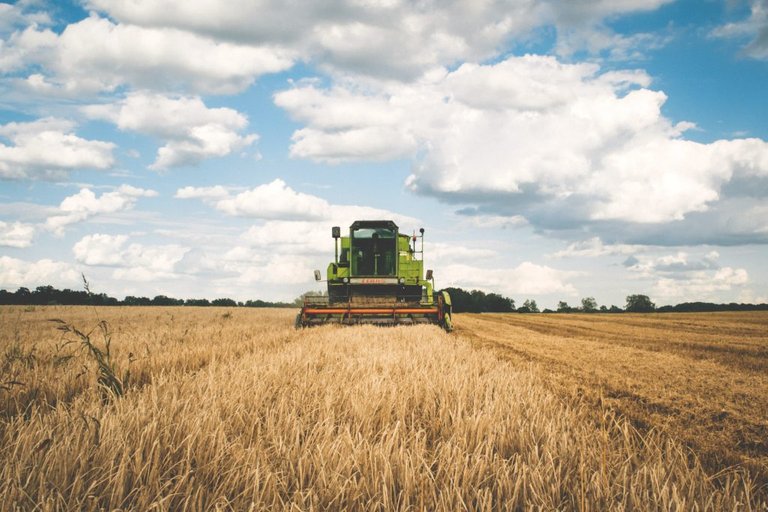
The Haber-Bosch strategy for integrating ammonium nitrate spoke to a noteworthy leap forward and permitted trim respects defeat past limitations. In the previous century agribusiness has been portrayed by improved efficiency, the substitution of work for engineered manures and pesticides, particular reproducing, automation, water contamination, and homestead appropriations. Lately there has been a reaction against the outer ecological impacts of traditional agribusiness, bringing about the natural development.
Horticultural investigation undertakings, since the late nineteenth century, have been mounted to discover new species and new farming practices in various territories of the world. Two early cases of campaigns incorporate Frank N. Meyer's products of the soil gathering trek to China and Japan from 1916 - 1918 and the Dorsett-Morse Oriental Agricultural Exploration Expedition to China, Japan, and Korea from 1929 - 1931 to gather soybean germplasm to help the ascent in soybean farming in the United States. In 2005, the horticultural yield of China was the biggest on the planet, representing very nearly one-6th world offer took after by the EU, India and the USA, as per the International Monetary Fund. Business analysts measure the aggregate factor efficiency of farming and by this measure horticulture in the United States is around 2.6 times more beneficial than it was in 1948.